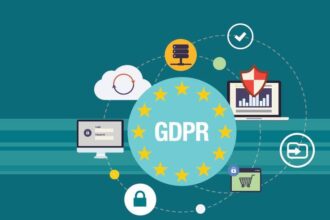I never would have considered IT professionals and librarians kindred spirits if I hadn’t interviewed Steven Zink, Ph.D., then the VP of Information Technology and dean of University Libraries at the University of Nevada, Reno.
I never would have considered IT professionals and librarians kindred spirits if I hadn’t interviewed Steven Zink, Ph.D., then the VP of Information Technology and dean of University Libraries at the University of Nevada, Reno. Zink told me the university’s IT help desk is combined with the reference desk in the main university library so librarians and IT staffers work side-by-side. Sure, both IT pros and librarians place a high value on knowledge. But beyond that, I couldn’t see how the roles complemented each other. I assumed the shared quarters were due to space and/or budget limitations.
But that wasn’t it at all. Zink said:
If you think about a library, librarians are very techie but also very service oriented. Our librarians are exposed very intentionally, and have been for 15 years, to this intermingling of cultures. I’ve often said our help desk at the university would never be able to work for an uncaring IT help desk in the private sector. … Librarians listen very well and will do anything to get an answer. The last thing they would say is, “I’m sorry. I’m going to send you a manual.” In libraries, the reference desk is very high on the status. It’s just the opposite in IT organizations. We have movement out of both, both laterally and vertically. It was a grand experiment that’s worked out very well.
The library and IT teams work together well because both place a high value on delivering superior service. As Zink hinted, they can also learn from each other when it comes to delivering a better customer experience. Librarians generally enjoy an edge over IT pros because they focus their work around the library’s users, rather than around the information materials they provide (emphasis mine), writes Dr. Dawn Thistle, executive director of Information Technology & Media Services at Assumption College, in a CIO Insight piece.
(A former library director at Assumption and head of Reader Services at College of the Holy Cross, Thistle is the only technology executive I’ve found with a background similar to Zink’s. Zink, a one-time librarian at the College of Wooster in Ohio, is now vice chancellor for the Nevada System of Higher Education.)
In my experience, IT help desks often focus on underlying technologies rather than how those technologies are used by business folks. Many IT pros could learn from how librarians communicate with their customers, writes Thistle. Librarians conduct “reference interviews” to ensure they have a thorough understanding of their clients’ needs. Doing so not only cuts down on unnecessary and time-wasting actions but also helps strengthen the relationship between the professional and the client.
Thistle offers a seven-step plan for improving customer service. A central suggestion is to partner with a peer department that already enjoys a reputation for delivering great customer service. She mentions a library, which is obviously not an option for many IT organizations.
More and more companies are appointing C-level executives to lead customer service efforts. If the org chart includes such an exec, he/she would be an obvious partner. When I interviewed customer service expert Bruce Temkin, he told me these kinds of appointments demonstrate a growing realization that good customer service must cross all organizational functions. Thistle touches upon this too, writing, “We find that we serve our external clients better when we know — and serve — our internal clients well.”
In addition to her action plan, Thistle dispenses lots of other good advice throughout her article. Here are some ideas I especially liked:
- Many folks are unaware of proactive actions taken by IT to ensure good service. (Replacing an aging piece of hardware before absolutely necessary is one example Thistle offers.) IT should communicate them to their colleagues through newsletters, portal announcements, email messages or other communications channels. This echoes advice I’ve offered in numerous posts, including one on lessons for CIOs on how to be a great communicator. Our own VP of technology often does this. His emails tend to generate a lot of “way to go” follow-up messages, which I hope make our IT folks feel good about their jobs.
- Encourage IT staff to serve on committees or participate in non-IT projects, as a way of getting to know their non-IT colleagues better. I’ve written about several companies, including Wells Fargo, that have encouraged camaraderie by co-locating IT and business areas.
Thistle also helpfully notes that efforts to improve customer service will take some time, as they involve a broad cultural shift. The same point was made by Glenn Remoreras, IT manager at CEMEX USA, on his Mysimpleprocesses blog. I shared several of Remoreras’ suggestions for building a customer-centric IT culture in a post from January.







